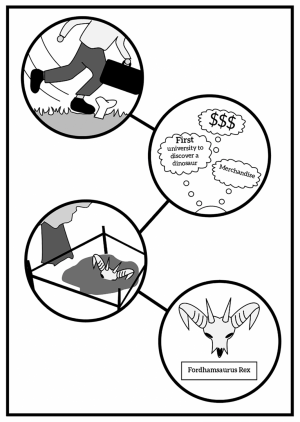Fordham Has A Responsibility to Go Carbon-Neutral
As global warming worsens, Fordham has a duty to follow the lead of other schools and cut their emissions
October 13, 2022
We can already see the effects of climate change on our environment, and it is high time that Fordham takes action to fight it. In the past 16 years, Fordham University has cut carbon dioxide emissions by 31.77 percent, which is a seemingly groundbreaking feat until you consider the progress of other universities.
While Fordham has made an overall decline in carbon emissions, this impact is overshadowed by a lack of urgency. Progress is progress, but given the current state of our climate, it is not enough. Carbon emissions are destroying our planet and minimal effort won’t save it. Universities and corporations are obligated to convert to 100 percent renewable energy, a seemingly ambitious statement that is actually realistic given our climate situation.
Fordham is one of numerous organizations committed to fighting climate change. As a founding signatory of the 2007 NYC Carbon Challenge, Fordham has pledged to reduce 40 percent of greenhouse gas emissions by 2030 — an easily achievable goal given that Fordham has already cut emissions by over 30 percent. By comparison, Stanford University has cut its emissions by an astounding 68 percent to date, which is more than double Fordham’s progress.
Fordham has begun to reduce its emission by converting to more renewable energy sources. For example, our transition to solar-based electricity from carbon-based fuel is heavily influenced by New York City’s passing of the Climate Mobilization Act.
Like the NYC Carbon Challenge, the Climate Mobilization Act aims to reduce greenhouse gas emissions from buildings’ heating, cooling and electricity use. Buildings account for over 70 percent of New York’s emissions, surpassing others such as transportation. By converting to cleaner energy, buildings could eliminate a significant portion of New York’s pollution.
One way that Fordham has minimized building pollution is by converting to LED lights. Previously using fluorescent lights, the re-lamping to LED has saved the University 712,000 kilowatt-hours of energy annually. The lights have been implemented in 39 buildings on both the Lincoln Center and Rose Hill campuses.
The Rose Hill campus is also able to rely more on clean energy after installing solar panels above the campus parking garage. Fordham has retained an extra $53,000 to date and generated up to 1,000 megawatt-hours (MWh) of electricity due to these panels. To put that number into perspective, the Solar Energy Industries Association calculated that 1,000 MWh could power up to 143,000 homes.
In comparison to Fordham, other schools are operating on a much grander scale to eliminate carbon emissions.
In comparison to Fordham, other schools are operating on a much grander scale to eliminate carbon emissions.
Ranked the sixth greenest college in America, Columbia University is powered by 100 percent renewable energy. Supplied by a combination of off-site wind turbines, hydropower and solar, Columbia has stabilized zero emissions, for reported electricity, since 2018.
Two wind farms in Oklahoma, the RedBed Plains Wind Farm and Grant Wind Facility, generate a substantial portion of Colombia’s energy. The university also purchases hydropower through New York Power Authority’s Recharge NY program. From Columbia, drastic efforts have been made to eliminate emissions, efforts which overshadow Fordham’s limited progress.
On the other side of the country, Stanford University is working to reach net zero emissions by 2050 and zero waste by 2030. Initially run by a fossil fuel plant, Stanford transitioned to grid-sourced electricity, which has rapidly reduced its emissions.
However, Stanford’s ability to produce innovative, clean energy comes at a hefty price. The investments for clean energy systems cost $485 million, and although these changes are expected to save the university $420 million over time, few colleges are equipped with such extensive funds.
Although Fordham’s exact budget allocated to sustainable energy is unclear, the NYC Carbon Challenge announced an annual reduction of emissions by 600,000 metric tons. Participants of the Carbon Challenge, including Fordham, have collectively saved over $200 million.
Last year Fordham reported a release of 26,611 metric tons of carbon emissions, or a carbon intensity of 13.86. Given that the university had initially started at 29,305 metric tons in 2005, that’s a reduction of 2,694 tons. Stanford University, however, has cut emissions by 150,000 tons of CO2.
Recent environmental travesties have defined an unprecedented climate emergency. As temperatures rise, it’s up to educators to set the example for change. Teaching sustainability is far more effective through example. Fordham offers a variety of clubs and classes on climate change, but their impact falters unless Fordham asserts action against this global threat.
Fordham’s small campus and class size allows for a smaller global impact; however, that doesn’t justify a lack of commitment towards sustainability. Every university should be allocating resources to fight against climate change, which has the potential to wipe out future generations. Fordham is taking a step in the right direction, but the university has a long way to go in terms of curbing its reliance on fossil fuels.












